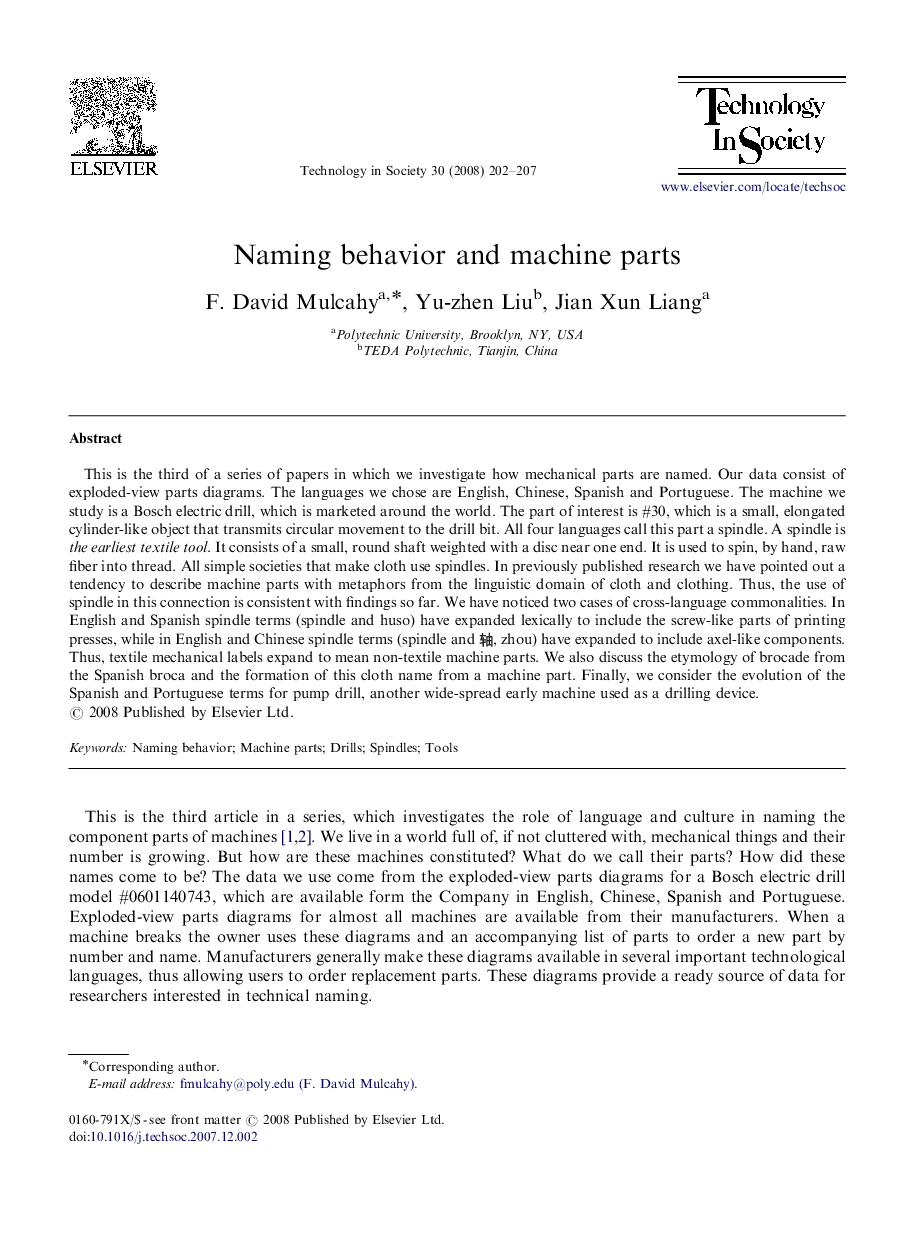| کد مقاله | کد نشریه | سال انتشار | مقاله انگلیسی | نسخه تمام متن |
|---|---|---|---|---|
| 375486 | 622705 | 2008 | 6 صفحه PDF | دانلود رایگان |

This is the third of a series of papers in which we investigate how mechanical parts are named. Our data consist of exploded-view parts diagrams. The languages we chose are English, Chinese, Spanish and Portuguese. The machine we study is a Bosch electric drill, which is marketed around the world. The part of interest is #30, which is a small, elongated cylinder-like object that transmits circular movement to the drill bit. All four languages call this part a spindle. A spindle is the earliest textile tool. It consists of a small, round shaft weighted with a disc near one end. It is used to spin, by hand, raw fiber into thread. All simple societies that make cloth use spindles. In previously published research we have pointed out a tendency to describe machine parts with metaphors from the linguistic domain of cloth and clothing. Thus, the use of spindle in this connection is consistent with findings so far. We have noticed two cases of cross-language commonalities. In English and Spanish spindle terms (spindle and huso) have expanded lexically to include the screw-like parts of printing presses, while in English and Chinese spindle terms (spindle and , zhou) have expanded to include axel-like components. Thus, textile mechanical labels expand to mean non-textile machine parts. We also discuss the etymology of brocade from the Spanish broca and the formation of this cloth name from a machine part. Finally, we consider the evolution of the Spanish and Portuguese terms for pump drill, another wide-spread early machine used as a drilling device.
Journal: Technology in Society - Volume 30, Issue 2, April 2008, Pages 202–207